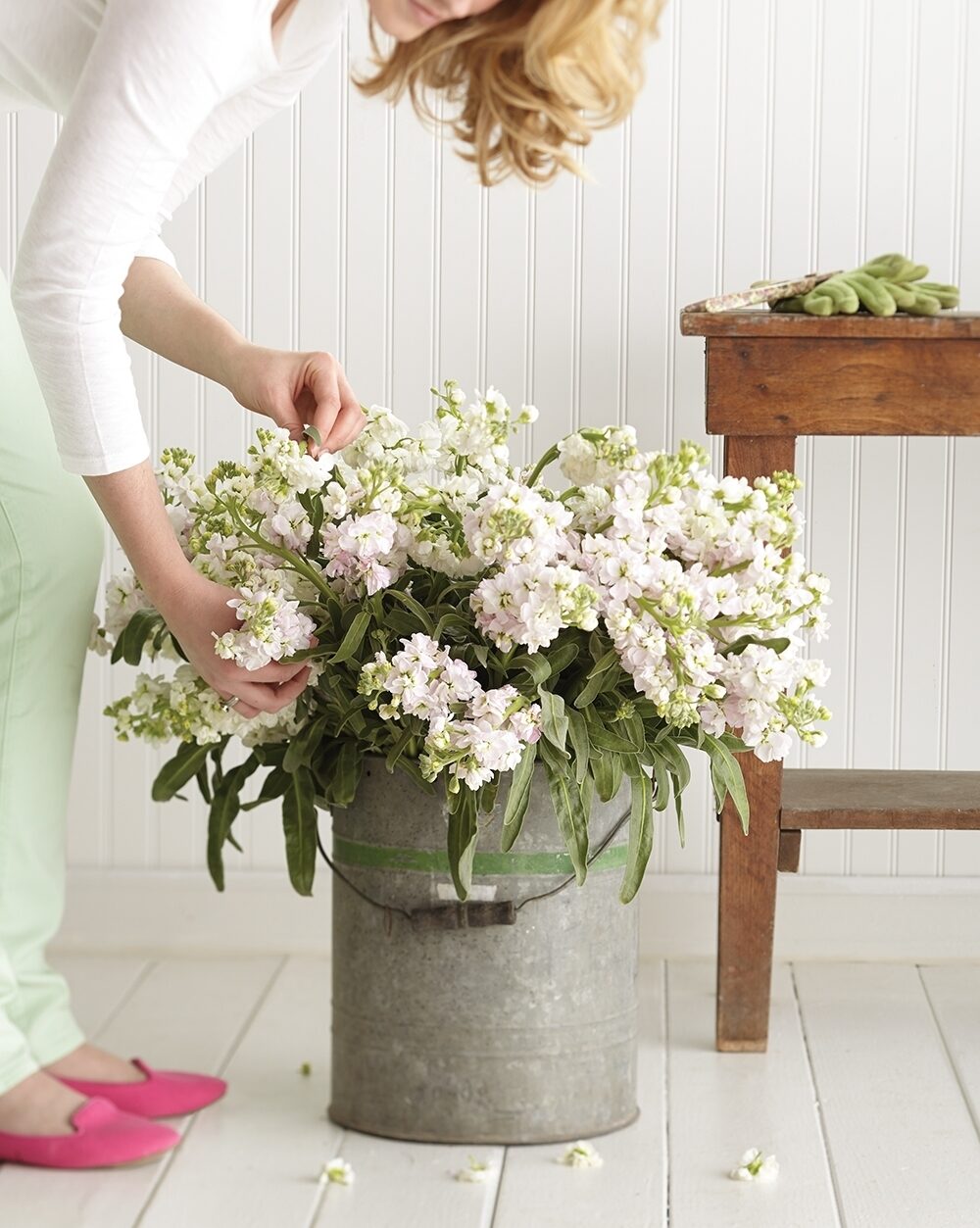

The hand of God is seen in the beauty and diversity of the flower bed. Plant a selection of old favorites–tulips, roses, peonies, snapdragons, stock and sweet peas–and harvest an abundance of blooms for your home.
“You will be like a well-watered garden, like a spring whose waters never fail.”

Peonies
Genus: Paeonia
Ruffled big blooms in luscious pink, snow white, coral, red and yellow make the peony a favorite cutting flower. Like most flowering perennials, peonies require winter dormancy. Roots are best planted in full sun in early fall, with blooms arriving on established plants in late spring and early summer. Plants will last for decades with little care. Flower types, determined by petal makeup, include single, double, full double, bomb and anemone.

Snapdragons
Genus: Antirrhinum
God’s sense of humor is shown in these vertical flower spikes, a favorite of children. Pinch the tiny blossoms of an older variety and they open and close like a dragon. An annual, snapdragons are an excellent cutting flower; harvesting increases their production. They grow from 10 inches to 5 feet tall, with standard being 18 to 24 inches. A single plant yields about eight spikes throughout the summer. Start them from seeds eight weeks before the last frost or purchase seedlings from a nursery.

Tulips
Genus: Tulipa
Men traveled from the Far East to introduce the goblet-shaped tulip to Holland in the 1600s. The result was tulip mania. The cost of bulbs skyrocketed to 10 times an annual salary, and fortunes were made and lost. Tulips come in many sizes, shapes and flowering seasons. Bulbs need a cold period to grow and bloom, and are planted in the fall in cooler zones for spring blooms. There, bulbs may flower for several years; in warmer zones they will need replanting.

Stock
Genus: Matthiola
Cloud-like clusters of sweetly scented round blooms crowd the spikes of stock, a Mediterranean native brought to the United States by Thomas Jefferson. These biennials grow to an average height of 18 to 24 inches and come in white, pastels and burgundy. Stock favors cool weather and grows best in spring and fall in colder climates, and from fall to spring in warmer. In cooler climates, start seeds indoors eight weeks before the last frost or purchase seedlings.

Roses
Genus: Rosa
Rose gardening began 5,000 years ago, explaining the vast diversity of choices of over 20,000 cultivars. From simple, old-fashioned five-petaled flowers to lush cupped or quartered blooms, there is a rose for everyone’s taste and every region. Forms include climbers, sprawling or tidy shrubs, and miniatures. Plant bare-root or potted roses in the spring; in warmer regions, plant when roses appear at local nurseries.

Ranunculus
Genus: Ranunculus
Colorful flower heads with delicate, tissue-paper-thin layers make this prolific bloomer a cutting-garden favorite. The frost-hardy, cool season plants are grown as annuals in most areas. They do best in zones with mild winters and long, cool springs. In warmer zones, Ranunculus’ claw-like tubers are planted in the fall for March flowers. In cooler zones, plant in early spring, a week or two before the last frost, for June or July flowers. Plants bloom for up to six weeks.

Sweet Peas
Genus: Lathyrus
A Scottish nurseryman developed the modern Sweet Pea and it became a late-Victorian-era garden sensation. The delicate flowers embody grace and beauty with their fluttering petals in lovely pastel colors. Some have a dreamy fragrance. Tall climbers will grow from 6 to 8 feet when supported. Patio varieties grow to 3 feet. Sow seeds of the hardy annual directly in the ground in fall in regions where soil doesn’t freeze, or several weeks before the last frost in the spring. They will bloom all season in regions with cool summers.
We want to keep in touch.
Don’t miss out on the latest Life:Beautiful updates, promotions and news.








